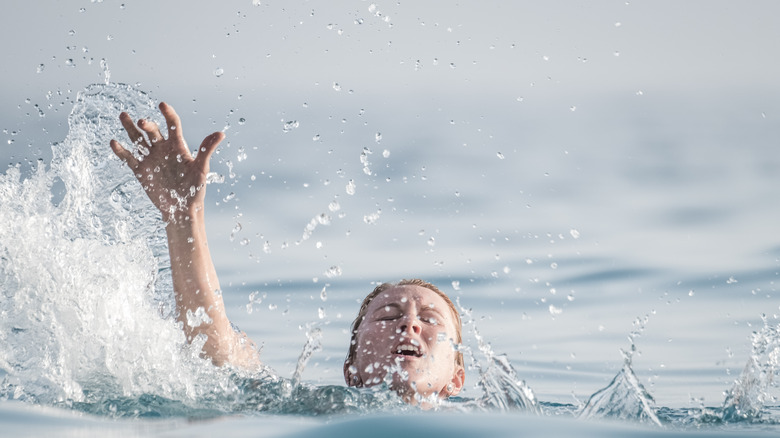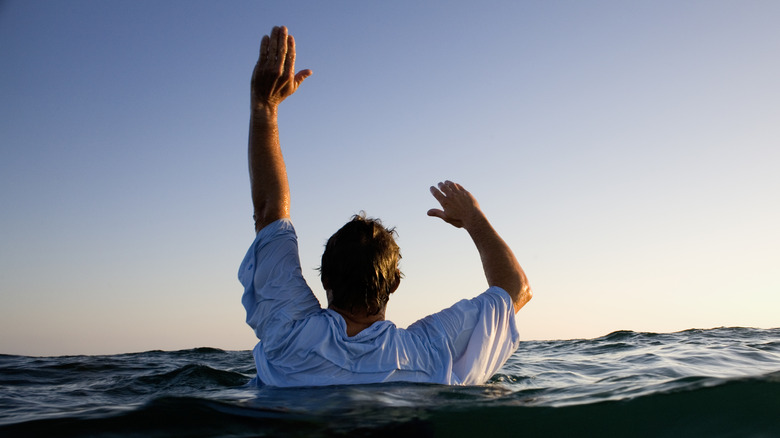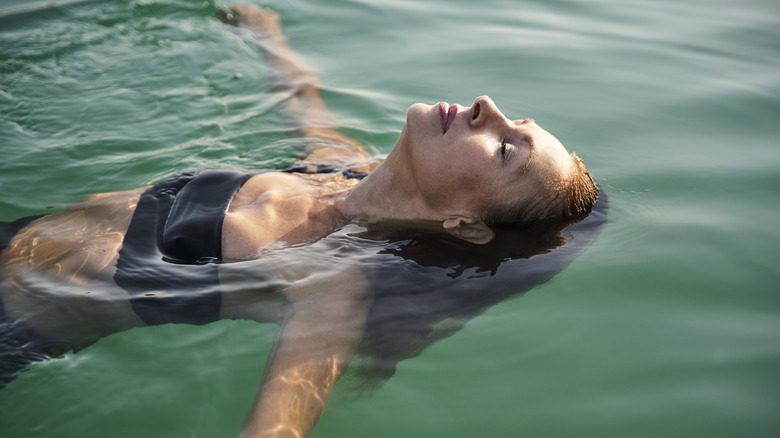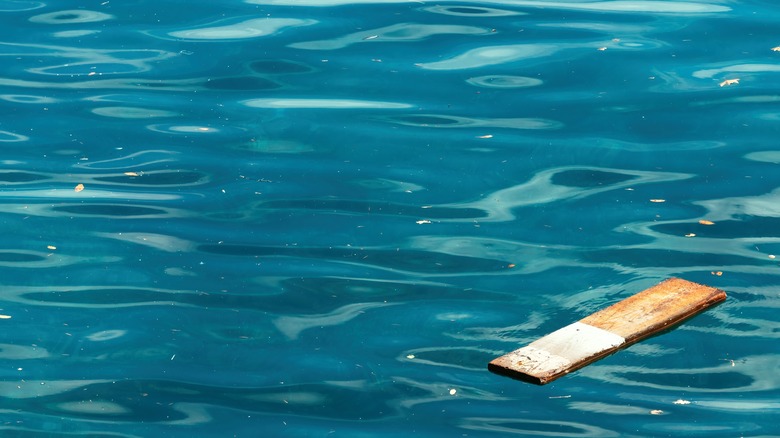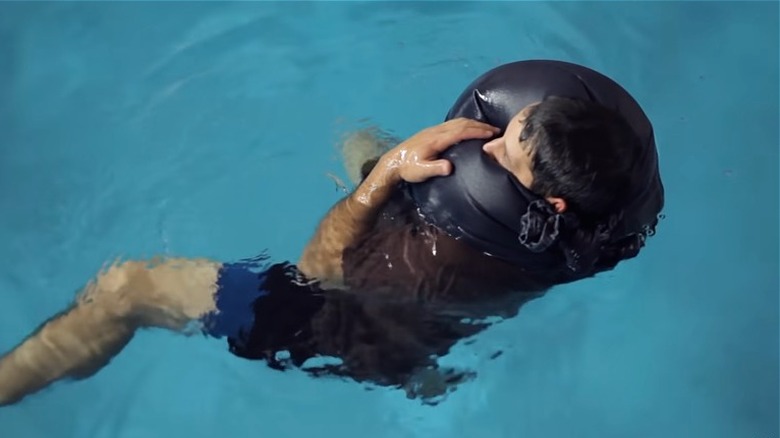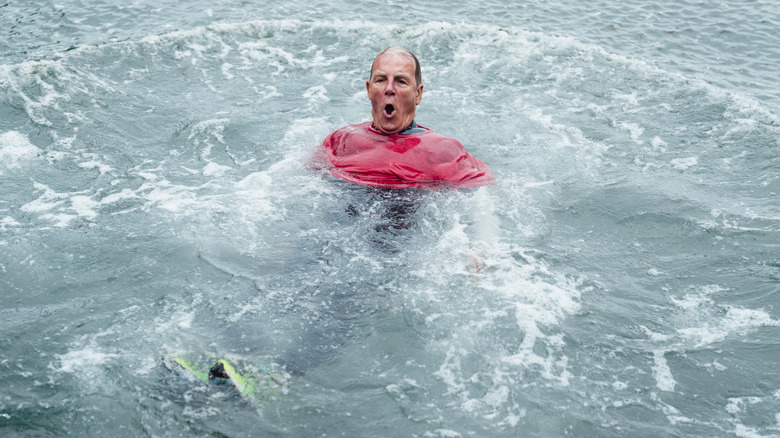How To Survive If You Fall Overboard – Even If You Don't Know How To Swim
Whether for fishing, water skiing, sight-seeing, or just relaxing, millions of people take to the water each day aboard all types of boats. While each of those excursions begin with the promise of an enjoyable day on the water, far too often they end in tragedy. U.S. Coast Guard statistics show there are more than 4,000 recreational boating accidents each year, resulting in more than 600 deaths. While falls overboard only account for around six percent of these accidents, they result in a disproportionate number of boating-related deaths. Nearly one-third of boating accident deaths each year are due to a fall overboard. These statistics show that nearly 70 percent of the people who fall off a boat die. However, a fall from a boat need not be a death sentence if you know how to properly react to unexpectedly ending up in the water.
These emergencies can happen on any size and type of vessel, from a canoe to a cruise ship. In fact, going overboard is a common danger for kayakers and small boat operators. Regardless of what type of boat you fall out of, once you're in the water, there are a few steps you should take to enhance your chances of survival. So, in addition to ensuring your boat is equipped with all necessary emergency equipment, before your next day on the water you need to know how to survive if you fall overboard -– even if you don't know how to swim.
Don't panic if you go overboard
As is the case in any emergency situation, the first thing to remember if you fall overboard is to remain calm. Of course, this is much easier said than done. It can be a challenge to not panic when you suddenly find yourself in the water and are facing the prospect of being lost at sea. However, panicking only makes the situation worse in several ways. For one, if you begin frantically thrashing about in the water, you will waste precious energy that will be needed to help you survive your ordeal.
Additionally, panicking may make it harder to focus and make rational decisions. It also often leads to rapid breathing and accelerated heart rate –- all of which can actually increase the odds of drowning. To avoid letting panic get the best of you in this situation, focus on controlling your breathing rather than your fears of the water or what the end result of your situation could be. Run positive result scenarios through your mind while putting together a realistic plan of action.
Float on your back
In the United States, the Coast Guard requires every boat to be equipped with a fully functional life jacket for every passenger on board. However, that does not mean everyone has them on at all times. Children under 13 are required to wear a lifejacket while the boat is moving, which, as an aside, makes choosing the right life jacket for your child an essential part of boating preparation. However, many adults choose not to wear a lifejacket, particularly if the boat is moving at cruising speed or drifting. If you happen to be wearing a lifejacket when you go overboard, surviving the incident will be infinitely easier as staying afloat is imperative to remaining alive. This is supported by USCG stats that show 85 percent of boating related deaths involve persons not wearing a lifejacket.
That said, even if you find yourself falling overboard without a lifejacket, you can keep yourself on the water's surface with relatively little effort. Floating on your back has the added benefit of keeping your mouth and nose out of the water to aid with breathing. To accomplish this, follow these steps: tilt your head back with your back arched and ears beneath the water; relax your body and take normal breaths; spread your arms and legs for improved stability and flotation; move your hands in a slight circular motion. If your legs sink lower than the rest of your body, don't panic -– that is normal.
Look for floating objects
Whether wearing a life jacket or not, finding something that can help you stay afloat can make surviving a fall overboard much more likely. As soon as you gain your bearings following a fall overboard, scan your surroundings for floating objects and continue to periodically look around throughout the ordeal. If you see a floating object close by, swim to it. If you are not a swimmer, dog paddle by flutter kicking with your legs and alternately moving each arm in a small circular motion while leaning forward in the water.
Once you reach the floating object, hold on and don't let go. It doesn't matter what it is -– piece of wood, plastic jug, navigation buoy, etc. –- if it floats, grab it. If the object is large enough to climb on top, do so. Staying out of the water will help you conserve body heat and make you more visible to rescuers. Additionally, if you see any bright-colored objects in the water, grab them. These colors will also help attract the attention of searchers.
Make flotation from clothes
There has long been a misconception that falling into the water fully clothed is far more dangerous. In reality, although some items may be cumbersome and bulky items such as shoes and boots should be discarded, many of the clothes you are wearing can assist you in several ways. The key to not drowning after falling in the water fully clothed is knowing how to use those clothes to your advantage.
One of the ways to do this is utilizing clothes to help you float. Any wet clothing will trap air. This can be intentionally done in a manner that will turn your clothing into an actual floatation aid. Ideally, this is done with a pair of pants. First, take your pants off. Then, tie the two legs together with a square knot. Next, grab the waist opening with both hands and put the pants above your head. Finally, quickly slam the waist opening into the water in front of you. This quick motion with trap air in the pants. Hold the waist opening closed beneath the water to keep the air from escaping. When the pants deflate, repeat the final few steps to refill them with air. This can also be done with other articles of clothing as long as all but one opening is knotted shut.
Maintaining body heat helps you survive
Another way the clothes you have on can aid you when you fall overboard is helping to maintain body heat. While the need to maintain body heat is obvious if you fall into icy water, many people underestimate the importance of this in warmer waters or climates. However, when you consider even warmest tropical ocean temperatures average 86 degrees –- a dozen degrees less than ideal body temperature –- it is easy to see how being submerged in water for an elongated period of time can have an adverse effect.
To aid in retaining body heat, keep on as many clothes as possible. Again, if you do not have a lifejacket or any floating objects to hold onto, it may be necessary to use your pants as a flotation device. Otherwise, it is in your best interest to remain fully clothed. If you find a floating object large enough to support you, climb on top to get out of the water. If you are stuck in the water, attempt to stay in the Heat Escape Lessening Position as much as possible. This entails getting in the fetal position while floating with your head back. If wearing a lifejacket, you should be able to maintain this position. If not, you may need to alternate between floating on your back and the H.E.L.P. position. Finally, limit your movement. Contrary to popular belief, movement in the water does not warm you, it actually allows more heat to escape.
